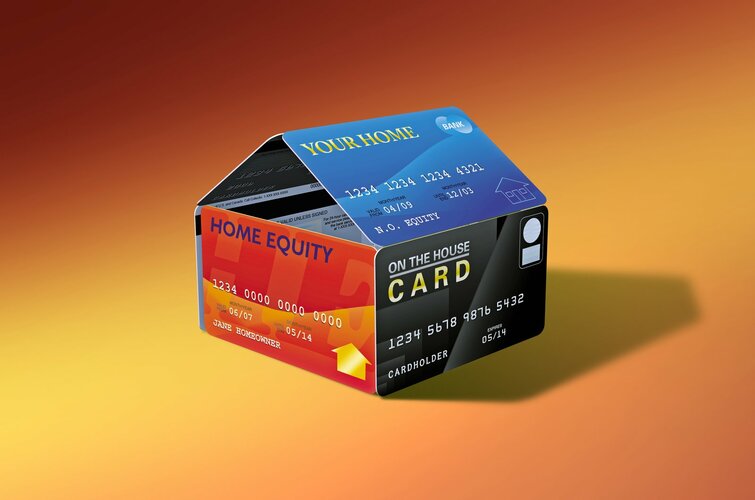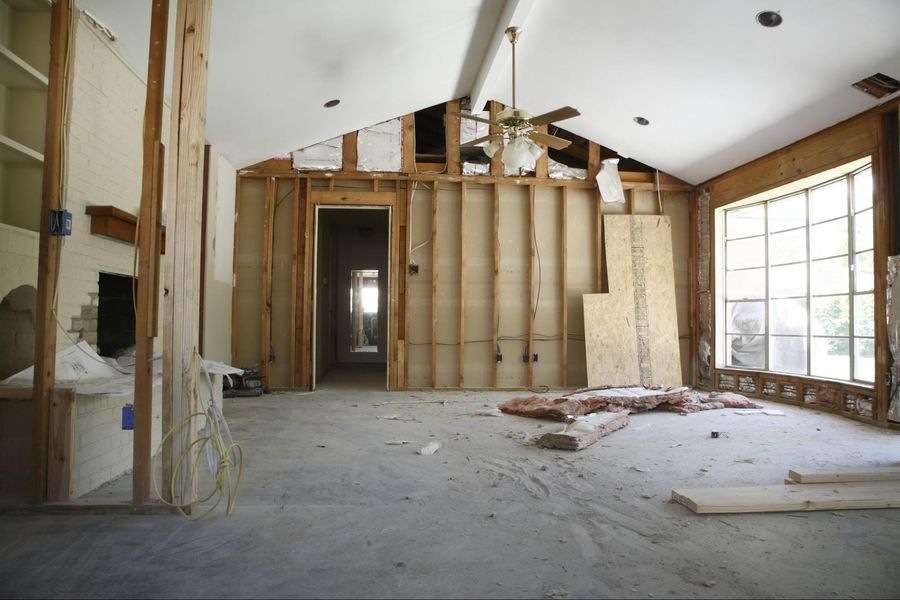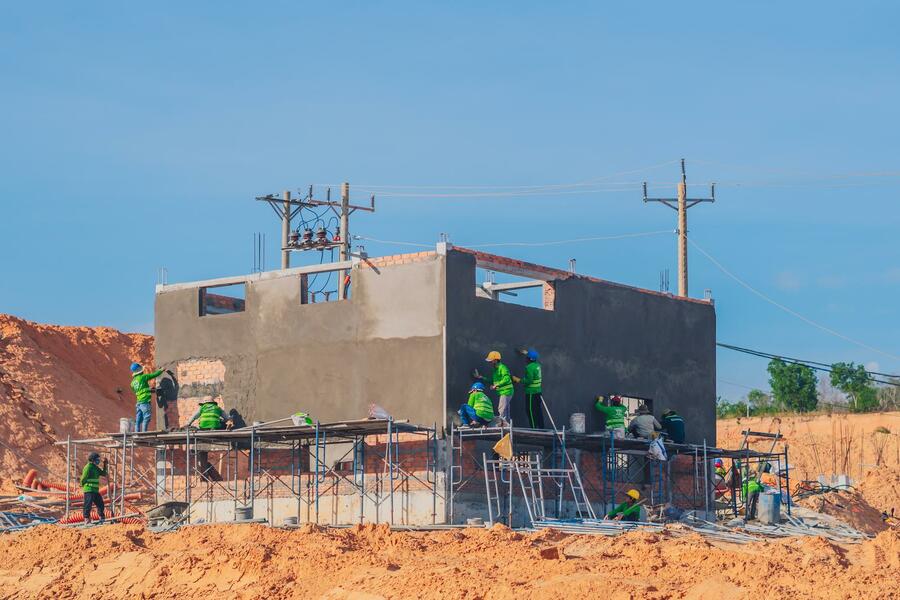A home equity line of credit (HELOC) is a kind of secured financing. Your home equity serves as a guarantee to the lender that you will repay the loaned funds. This is known as a type of “revolving credit” loan.
As a revolving credit loan, you may borrow money up to the credit limit stipulated in your contract, pay it back, and then borrow it again. HELOCs are different from home equity loans and can be used in tandem with a mortgage or as a standalone product.
Keep reading for more information on your home equity line of credit, as well as a comparison of a different home equity line of credit rates available in Canada today.
What is a Home Equity Line of Credit?
As mentioned before, a home equity line of credit is a type of secured loan which uses the equity of your home as collateral for a line of credit. It is a revolving credit loan that enables you to borrow money, pay it back, and borrow it again.
If you pay a mortgage, you can increase your house equity by a certain percentage. Your home equity is also increased when you have increased the value of your property through a general increase in the cost of living on the housing markets or by home improvement or renovation.
Home equity loans are used for borrowing money. Because you own equity at home you are entitled to borrow money from them using that equity. HELOCs are secured by your house enabling you to obtain substantial amounts of funds at lower rates.
How Does a HELOC work?

HELOCs offer you a credit limit that relates to your home’s appraisal values, and they require an appraisal for the property. Your home equity line of credit limits will also depend upon your credit score and your current debt level.
The funds can be borrowed from your HELOC and are repayable at any time. Most HELOC loans offer access to your HELOC funds via internet banking, a bank branch ATM, or prepaid bank cheques. Some lenders may allow you to pay with debit cards, credit cards, or Visa access cards.
A home equity line of credit may be referred to by different names depending on the institution doing the lending. As with any other financial product, it’s important to do a lot of research and shop around to make sure you’re getting a good deal.
Types of HELOCs
There are two primary types of HELOCs. One is a home equity line of credit in tandem with a mortgage, and the other is a home equity line of credit by itself. There are also home equity loans, which are slightly different from HELOCs.
The type of HELOC (or home equity loan) that you end up going with will largely depend on the details of your situation. These details include the amount you wish to borrow, the value of the equity you are borrowing from, and how you intend to use the funds.
Understanding these details can go a long way toward ensuring that you are getting a financial product that suits your borrowing needs. Conversely, if you do not pay careful attention to details, you can end up in a situation that is less than optimal.
Home Equity Line of Credit and Mortgage
HELOCs combined with a mortgage is offered by a number of major financial institutions, usually under some kind of unique brand name. These are sometimes referred to as a “readvanceable mortgage”.
The basic idea is that they combine HELOCs with fixed-interest rate mortgages. With a home equity line of credit, you will usually only be required to pay interest on the money you actually use. You typically will have no fixed repayment amounts.
The fixed-term mortgage in this instance will be subject to a period of amortization. Unlike the home equity line of credit component, you will have to make regular payments on the principal amount as well as scheduled interest payments.
Credit limits on HELOCs in tandem with mortgages can go all the way up to 65% of the home’s value. The line of credit will increase up to the limit as you pay down the principal amount on the mortgage component.
Standalone Home Equity Line of Credit
HELOCs by themselves as a standalone products are considered “revolving credit” products. They are unrelated to mortgages.
Like a home equity line of credit with a mortgage, the credit limit can go up to a maximum of 65% of the value of your home. However, the line of credit will not increase as you pay down your mortgage.
HELOCs as a standalone product can be used in lieu of a traditional mortgage to purchase a home. This can give you more flexibility since you will not be required to make scheduled payments for your principal and interest.

Home Equity Loan
Home equity lines of credit are distinct from home equity loans. You receive a lump sum payment all at once when you take out a home equity loan. This may account for 80% of the value of your house. Interest is charged on the total sum.
It’s not revolving credit — it’s a loan. You have a predetermined term and schedule for repayment of a fixed sum. Principal and interest are included in your payments. This is different from HELOCs, where you typically have no fixed repayment schedule.
Home equity loans and HELOCs typically have considerably better interest rates than personal loans, credit cards, and other unsecured debt, because they both use your home as security.
This makes both choices incredibly appealing. However, users of either should use caution. Credit card debt can cost you thousands of dollars in interest if you can’t pay it off, but a HELOC or home equity loan that you can’t afford to pay back could make you lose your house.
Compare Home Equity Line of Credit Rates
When purchasing financial products such as mortgages and credit cards it is crucial to compare the costs in order to have the highest return on the money. The cost of switching lenders is zero if the new lender offers better rates than your current lender.
However, it is crucial to calculate the costs first in order to make the move financially logical. Mortgage rates comparison websites offer tools for helping you evaluate home equity line of credit rates from major financial institutions in Canada.
As with any other financial product, HELOCs will have different stipulations. It’s important to be careful when reading through these, and ask questions to the lender if there is anything unclear or difficult to understand.
How Do I Pay Back a Home Equity Line of Credit?
When utilizing an equity home loan, you will have a repayment schedule for the principal and the interest. With HELOCs, you have more flexibility in paying back the loan. Upon the payment of the debt, the monthly interest you pay will decrease.
In case of a 0% balance, there will be no charge for your loan amount. Some lenders may require an annual fee no matter how much the balance is in their credit lines. Be prepared for any possible charges from your bank before you open a home equity line of credit account.
Home Equity Line of Credit Rule Changes
HELOC usage rose recently in the United States to a level regulators have considered alarming. The Bank of Canada responded with stricter lending standards. Borrowers will sometimes be able to borrow up to 100% of their credit limit, even if they don’t need the loan when closing.
Even though you have zero balances, the Bank assumes you’re taking all your credit to test your ability to pay theoretical interest. The bank will typically apply a theoretical payment based on an amortizing period of 25 to 30 years.

Can I Buy a Home Using a Home Equity Line of Credit and a Mortgage?
Certain lenders offer the option to buy homes using an equity credit line together with a mortgage. A revolving line of credit can be used for the purchase of a property and a variable-term loan is included.
The credit line portion can be repaid at any time of the month if the minimum monthly interest is paid. Fixed-term mortgages are refundable as normal mortgages over an amortized period.
The purchase of your house with a HELOC mortgage is required with an additional 20% of the purchase price. The remaining 80% is divided in two parts:
- The line of equity is up to 65% of the purchase price.
- The fixed-term mortgage component is usually 15% of the purchase price.
What is The Credit Limit on a HELOC?
A HELOC provides you with a fixed credit limit that is based on the worth of your property as determined by an appraisal, which will cost money. Your credit history and current debt load can also affect your HELOC credit limit.
Only the portion of the loan that you borrow will incur interest. This will be accomplished by making an interest-only minimum HELOC payment. Your HELOC won’t always be interest-only, though.
You will be required to begin paying back the money you have borrowed after a specific amount of time, known as your HELOC’s draw term in your agreement.
Common Questions About Using Your Home Equity
There are some common questions that people ask about loans and lines of credit that are secured with your home equity:
- Why should I go with a HELOC? HELOCs are flexible, which makes them quite popular as a way to borrow money. The rates are also generally preferable to unsecured loans. HELOCs can also be combined with a mortgage for added flexibility.
- What drives changes in HELOC rates? HELOC rates are determined by the prime rates offered by lenders along with the lender’s premium. These rates change most often due to policy changes at the Bank of Canada. The BoC changes its rates based on its need to manipulate inflation.
- How will HELOC rates change in 2022? HELOC rates will generally change according to prime interest rate changes, which follow policy changes at the Bank of Canada. The BoC has been steadily hiking its rates lately, and these hikes are expected to continue as the bank attempts to curb high inflation levels.
- Are HELOCs better than reverse mortgages? Reverse mortgages allow borrowers to access up to 55% of their home’s value. By contrast, HELOCs allow access to equity, rather than a percentage of the total value of the home. Which one is best for you depends on your exact situation and borrowing needs.
What Is The Variable Interest Rate On a HELOC?
A home equity loan has a variable interest rate. Consequently, the interest rate in HELOCs could vary as a result of the Bank of Canada changing rates. The prime loans are financed by the prime interest rate of the Bank of Canada.
Your HELOC loan is based on the lender’s prime interest rate less the corresponding percentage of your loan.
As mentioned before, different lenders will give you different interest rates depending on the exact lines of credit they offer, as well as the exact nature of the line of credit you are taking out. Scrutinizing and shopping around is essential for securing a comfortable line of credit.
How Do I Qualify For a Home Equity Loan?
Most major Canadian banks have equity loan options, and some are small. It’s mandatory for you to hold 20% equity to apply for a HELOC. When you’re able to achieve 20% equity, lenders are going to examine your credit and income to determine eligibility.
You can reach 20% equity using a couple of different methods. The easiest way is to make a down payment of at least 20% on your home. The other way is to make mortgage payments until your equity reaches 20%.
HELOC Pros and Cons
The lenders are much less concerned about who they approve for HELOCs given the lack of fixed pay periods. This is especially true when a debt collector misses a payment, a credit card has fallen and property values are dropping.
Accordingly, there are a number of pros and cons associated with HELOCs:
Pros
- The flexibility of repayment. Since HELOCs fall under the category of revolving credit, you can borrow money as you need it and repay it as you are able.
Cons
- Variable interest rate. The interest costs of a HELOC will change over time, which can lead to the unexpected difficulty in repayment if your interest rate jumps suddenly.
- Caution is required. As a revolving credit product, it can be easy to overborrow from your HELOC, resulting in a debt hole that is difficult to repay.
Best HELOC Rates in Canada
Home equity loans can be used as a source of cash or as collateral to buy property at an affordable interest rate than a traditional credit card.
In some circumstances, HELOCs are more attractive and interest rates are often lower for HELOCs.
Interest rates for different types of loans and lines of credit will change over time, and they will be different depending on the financial institution, and the exact nature of the loan you are seeking.
The lowest rates available in Canada as of October 2022 are as follows:
- HSBC — 3.05%
- Tangerine — 3.10%
- CIBC — 3.20%
- BMO — 3.45%
- Laurentian Bank — 3.45%
- Scotiabank — 3.45%
- TD — 3.45%
The abovementioned rates are based on a HELOC amount of $250,000 and are generally held for a period of 120 days.

Home Equity Line of Credit Statistics
Here are the latest statistics from FCAC regarding HELOCs in Canada:
- The Home Equity Line of Credit holders who do not have mortgages totals 1.6 million, and their average home equity, expressed as a percentage of their home’s worth, is 80%.
- Borrowers’ withdrawals of home equity through HELOCs totaled $34 billion in 2018.
- 1 in 5 people (19%) report using their HELOC for purposes other than those intended (13% borrowed less).
- Nearly 30% of their HELOC was borrowed from Peter to pay Paul (credit cards, mortgages, or other loans).
- 36% of people between the ages of 25 and 34 engage in this “often” or “most or always.”
- 41% of HELOC borrowers between the ages of 25 and 34 acknowledged making interest-only payments usually or always.
- If the payment amount increased by less than 10%, 1 in 4 HELOC holders will “battle” to make monthly payments on their HELOC.









